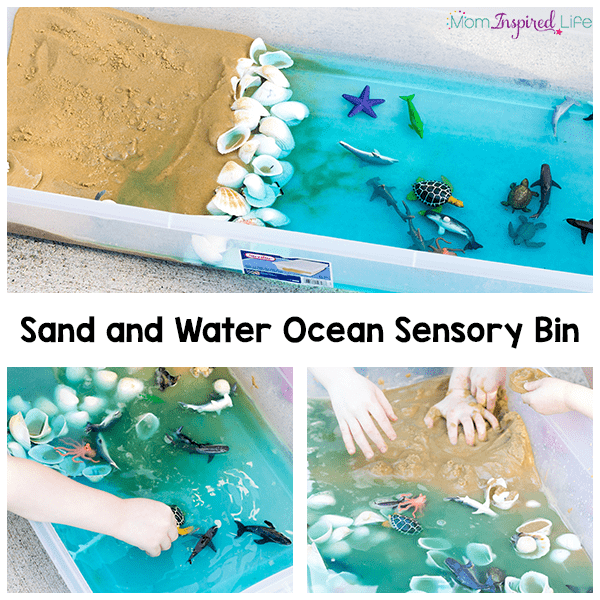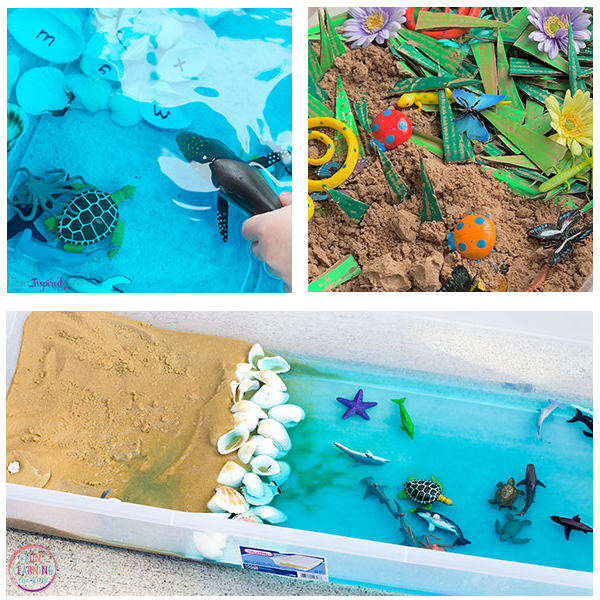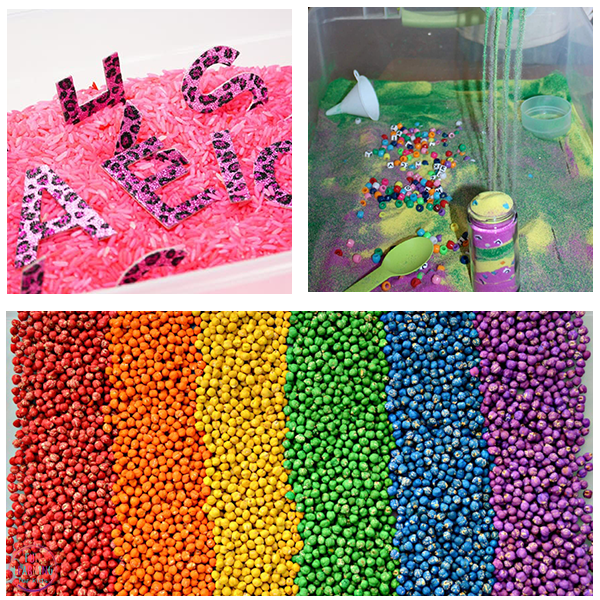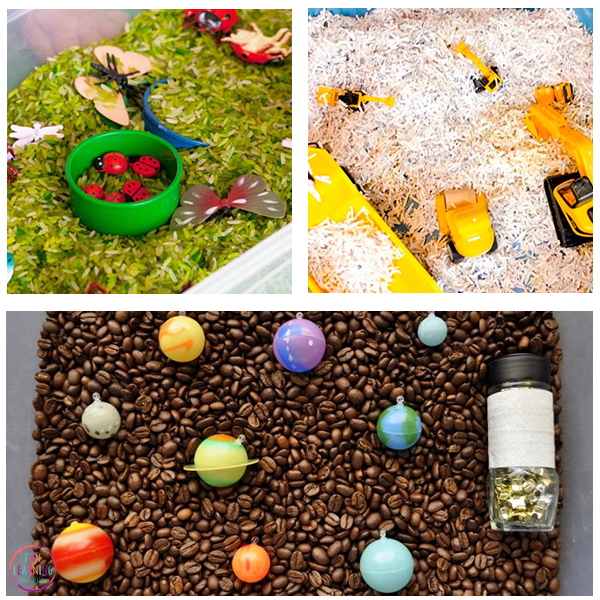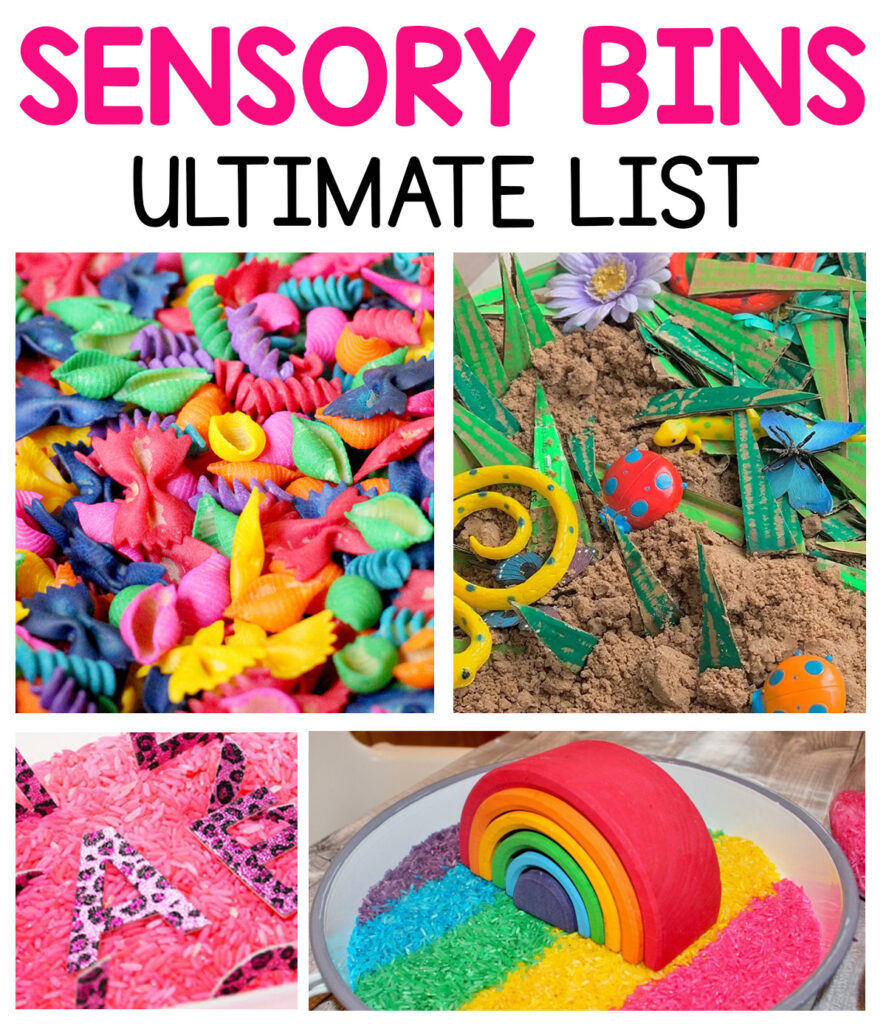Sensory Bins: Everything You Need to Know
If you’re new to the world of sensory play, you’re in for a treat. Our kids love sensory bins! Sensory bins are a fantastic way to engage children’s senses and promote their cognitive, motor, and emotional development.
We’ll dive into the key things you need to know about sensory bins and show you our absolute favorites.
What are Sensory Bins?
Sensory bins are containers filled with materials that provide sensory stimulation for children. They usually consist of a base material, such as rice, sand, or water. Then various objects or tools for children to explore, manipulate, and play with are added on top of that.
The container should be big enough that your kids don’t spill the base outside of it!
Sensory bins come in a wide range of themes and variations, from nature-inspired bins with leaves and flowers to ocean-themed bins with shells and sea creatures. They are a versatile and engaging tool that can be used to support children’s learning and development.
Why Are Sensory Bins Beneficial?
Sensory bins offer numerous benefits for children’s development. Here are some of the key reasons:
- Sensory Stimulation: They provide opportunities for children to engage their senses, including touch, sight, sound, smell in a controlled and playful setting. This sensory stimulation helps children develop their sensory processing skills, which are essential for their overall sensory integration and cognitive development.
- Fine Motor Development: Sensory bins encourage children to use their hands and fingers to manipulate and explore the materials, promoting the development of fine motor skills, hand-eye coordination, and finger strength. For example, scooping, pouring, pinching, and grasping small objects in a sensory bin can help develop their fine motor skills and dexterity.
- Cognitive Development: They also provide opportunities for children to engage in open-ended play, where they can use their imagination, creativity, and problem-solving skills to explore and manipulate the materials. This type of play promotes cognitive skills, such as critical thinking, decision-making, and planning.
- Emotional Development: Sensory play can also have a positive impact on children’s emotional development. Engaging in sensory play can help children regulate their emotions, manage stress, and express their feelings in a supportive environment. Sensory bins can also be used as a calming and soothing activity for children who may need sensory input for self-regulation.
How to Create a Sensory Bin
Creating a sensory bin is easy and fun! Here are the steps to make your own sensory bin:
- Choose a Base Material: Start by selecting a base material for your sensory bin. This can be anything that provides sensory stimulation, such as rice, sand, water, or even cooked pasta. Consider the age and developmental level of the children who will be using the sensory bin when choosing the material.
- Select Objects and Tools: Next, gather objects and tools that are related to the theme or concept you want to focus on in your sensory bin. For example, if you’re creating a farm-themed sensory bin, you might include toy animals and farm equipment. You can also add natural materials, such as leaves or twigs, to enhance the sensory experience.
- Add Texture and Sensory Elements: Consider adding texture and sensory elements to the base material to further engage children’s senses. For example, you can dye the rice with food coloring to make it visually appealing, or add scented materials, to provide olfactory stimulation. You can also add items with different textures, such as soft fabric or rough sandpaper, to add tactile variety to the sensory bin.
- Arrange and Organize: Once you have gathered all the materials, arrange them in the sensory bin in an organized and visually appealing way. Consider the layout and accessibility of the items, and ensure that they are safe and age-appropriate for the children using the sensory bin.
- Introduce and Explore: Invite children to explore the sensory bin and engage their senses. Encourage them to use their hands, fingers, and tools to manipulate and explore the materials. Observe and support their play, and encourage open-ended exploration and imaginative play.
Helpful Tips
Here are some tips to help you make the most out of your sensory bins and create a rich and engaging sensory play experience for children:
- Supervision and Safety: Always supervise children while they are playing with sensory bins to ensure their safety. Be mindful of small objects or materials that may pose a choking hazard, and ensure that the sensory bin is set up in a safe and age-appropriate environment.
- Open-Ended Play: Encourage open-ended play in sensory bins, where children can use their imagination and creativity to explore and manipulate the materials.
- Language Enrichment: Use theses as opportunities for language enrichment by engaging in conversations, asking open-ended questions, and introducing new vocabulary related to the sensory materials and themes. This can support children’s speech and language development and promote their communication skills.
- Variety and Rotation: Keep the sensory play fresh and engaging by rotating the materials, objects, and themes in the sensory bin regularly. This can help sustain children’s interest and curiosity, and encourage them to explore new textures, colors, and concepts.
- Incorporate Learning Goals: Consider incorporating specific learning goals or concepts into your sensory bins to align with educational objectives. For example, you can create sensory bins that focus on counting, sorting, or letter recognition to support early literacy and numeracy skills.
Favorite Sensory Bins
Alphabet Ocean Sensory Bin – Fun Learning for Kids
Sand and Water Ocean Sensory Bin – Fun Learning for Kids
Spring Bug Sensory Bin for Kids – Happy Toddler Playtime
Sand Sensory Bin – Little Bins for Little Hands
Rainbow Chickpeas – And Next Comes L
Reading Sensory Bin – I Can Teach My Child
Bugs Sensory Bin – Fun With Mama
Construction Site Sensory Bin – Busy Toddler
Coffee Beans “Space” Sensory Bin – I Heart Crafty Things
Butterfly Life Cycle Sensory Bin – Pre-K Pages
Rainbow Rice Sensory Bin – Messy Little Monster
Planting Flowers Sensory Bin – Frugal Fun 4 Boys
Arctic Sensory Bin for Winter – Fun Learning for Kids
Sensory bins are a fantastic tool for promoting children’s sensory, motor, cognitive, language, and emotional development.
By providing opportunities for open-ended play and sensory exploration, sensory bins can engage children’s senses, foster their creativity and imagination, and support their overall learning and development. Get started with creating your own sensory bins and watch your little ones delight in the world of sensory play!


